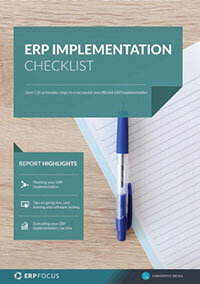ERP Testing: your Path to Implementation Success
It would be easy to expect that after tens of thousands of implementations, ERP software ought to be mature enough to just run the “install wizard”, go get a cup of coffee, and come back to a completed ERP system. Unfortunately, ERP systems are so flexible and complex that a huge success factor for an ERP implementation is aggressive and extensive testing.
ERP testing requires more than just assigning manpower. It is an iterative process, which means not only testing, but evaluating problems, and fixing things. It means having valid master data available to support the ERP test, and understanding the process you are testing. It means testing development objects, and how they interact with everything else. It means having a dedicated test client, which can be controlled and monitored. Each test leads to a bigger test, so there is a natural progression of testing sophistication over the course of an ERP implementation.
After initial configuration is completed, all planned transactions are tested for simple transactional validity: I can enter a sales order; I can report production; I can place a purchase order. Some problems will emerge from these tests requiring revision and re-testing. This level of testing is done on an individual basis, with each functional team understanding that all of their transactions need to be successfully tested by a given milestone date.
Test Run your Business Processes
Shortly after this milestone date, the first round of integration testing should be scheduled. “Integration testing” in this case, means testing an entire business process, from initial input to final output. An integration test is a scripted arrangement of the ten to sixty sequential transactions required to execute a specific process in the real world. The key to making this phase successful is to identify the right fifteen to thirty scripts that represent 90% of the business processes, and working hard on process improvements until they all execute smoothly.
The next round of integration tests involves subject matter experts and super users. During this round of tests, random but real world data is introduced. The randomness ensures that the right processes were identified in integration test one; using real world data allows business participants to help evaluate the output. During this round of ERP testing, master data must be well developed, because the ability to enter real orders with real customers means that master data is available to feed the process.
Subsequent rounds of integration tests try to rehearse and execute an ERP go-live, including synchronization of inventory, sales orders, purchase orders and production orders, and replicating one hundred percent of the activity of a business for a given time period.
Every ERP testing cycle teaches, uncovers problems, and makes go-live more manageable. Eventually, an inflection point occurs during testing which is incredibly important for an ERP team’s morale and attitude; it is the realization that the team is certain of a successful go-live. That knowledge and confidence – which can only come from repeated and successful testing - is essential to deliver a successful ERP implementation.
Free white paper

ERP Implementation Checklist
Over 120 actionable steps to implementing a new ERP successfully

Featured white papers
-

ERP Implementation: 9 steps to success
The 9 proven steps you should follow when implementing ERP
Download -

ERP Implementation Checklist
Over 120 actionable steps to implementing a new ERP successfully
Download -

Manufacturing ERP Implementation Checklist
Over 70 actionable steps to rolling out new manufacturing ERP software
Download
Related articles
-

The case for multi-tier ERP implementations
Learn more about multi-tier ERP implementation and why you might need one
-

CMMC Compliance: What Aerospace and Defense Manufacturers Need to Know
Key insights on CMMC compliance, deadlines, and securing DoD contracts with CMMC 2.0 certificatio...
-

An example ERP implementation team structure for your project
Learn about three key elements of an ERP implementation team and the individuals who contribute w...

